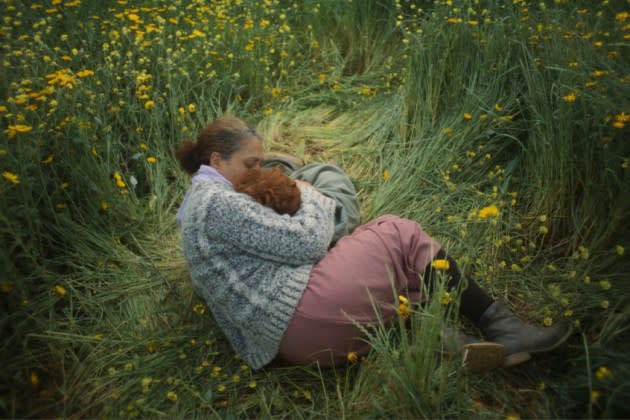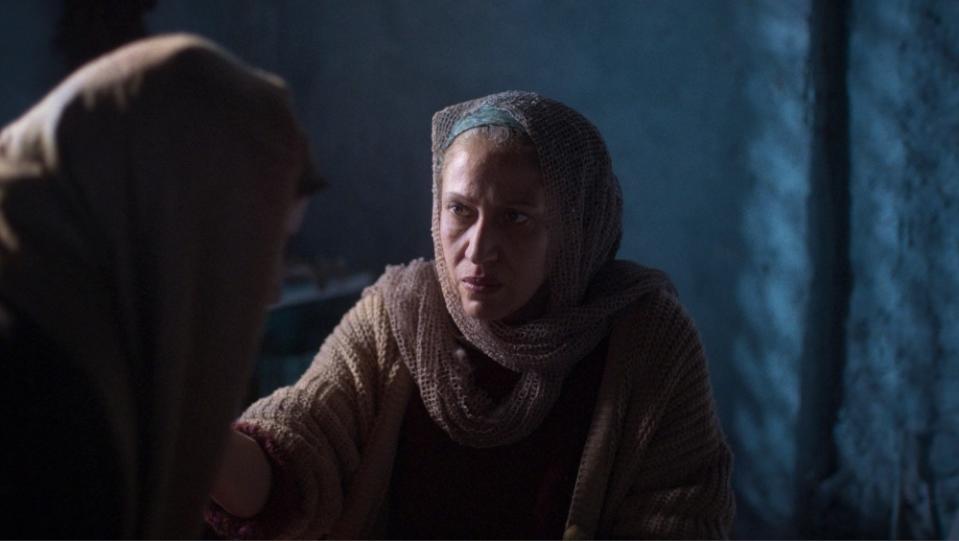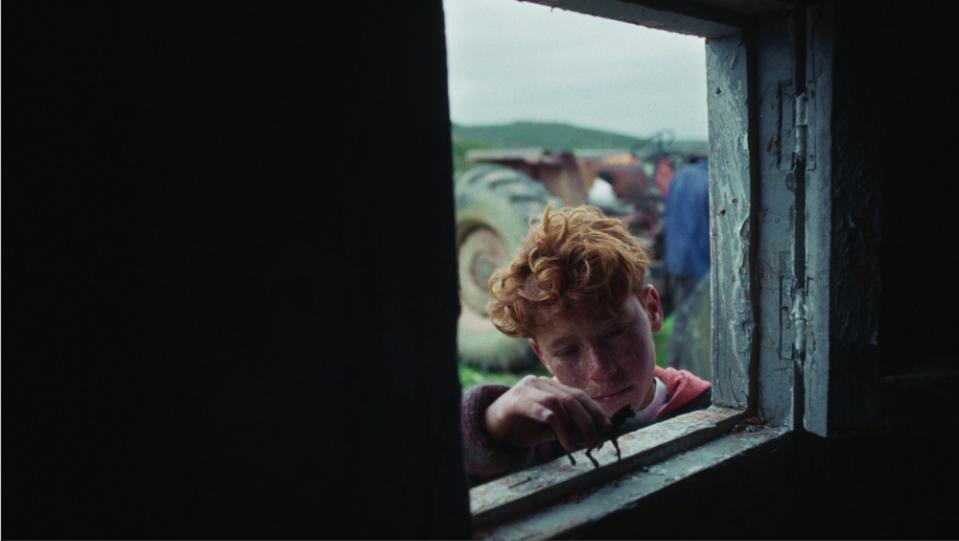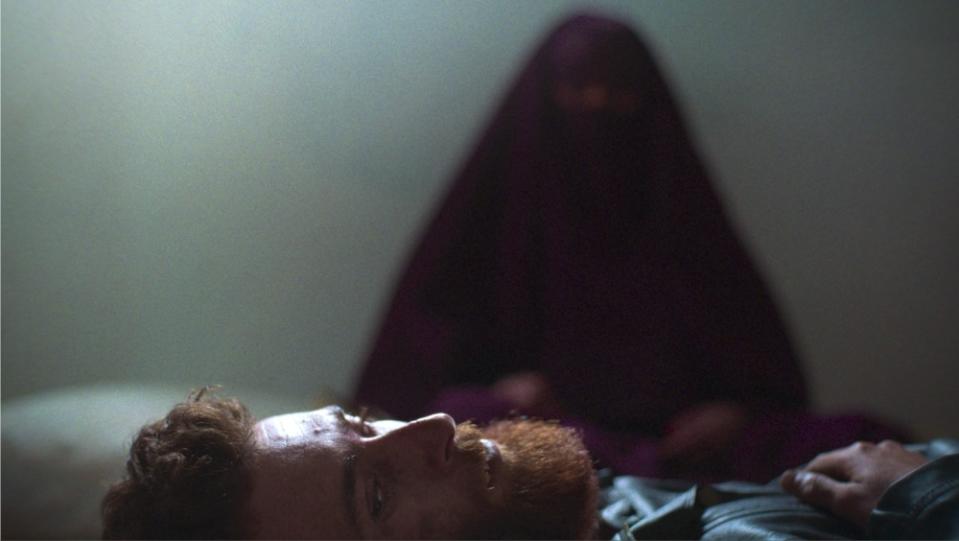‘Who Do I Belong To’ Director Meryam Joobeur Explores Maternal Heartache With A Surrealist Touch
- Oops!Something went wrong.Please try again later.
- Oops!Something went wrong.Please try again later.

Montreal-based filmmaker Meryam Joobeur made an international splash with her Oscar-nominated “Brotherhood,” winning considerable acclaim for a 2018 short about a rural Tunisian family wracked with heartache once the eldest son returns home after fighting for ISIS. Premiering in competition in Berlin, Joobeur’s feature debut “Who Do I Belong To” builds on the same premise and keeps the same cast, but the filmmaker does not see her latest film as an extension or reimagining.
Instead, “Who Do I Belong To” reframes the narrative around a more female perspective, focusing on the family matriarch Aisha (Salha Nasraoui) who is torn between relief, grief and guilt when only one of her two escaped sons comes home. What’s more, he returns with a pregnant Syrian bride, unspeaking and unsettled beneath a full-body niqab. The feature also works in new tones, playing with magical realism and full-blown horror to better explore the story’s darkest corners.
More from Variety
How would you describe the relationship between the short and feature?
I had the idea for the feature while shooting the short. I felt myself more and more drawn to the female characters, to this image of the Syrian bride wandering the landscape in her niqab, and I became very close with the actress Salha Nasraoui, who plays the mother. I started wondering about those characters, imagining their stories. I wouldn’t call the feature an adaptation; it’s more of a Yin and Yang situation, happening in a parallel, breakaway universe. You know how we wonder how our lives would be had made other choices? We would be the same people living a different lives – and that’s how I saw the feature. Creatively, it felt like a new project, a new story.
Up until recently, the film was known as “Motherhood.” Did you change the title to create more distance with the short?
Your understanding of a project evolves over the years that you live with it. Here, the title change actually arrived rather early in the editing process when I realized the central question I had been wrestling with all this time was just that: Who does my life belong to? That understanding really helped me shape the film. I know it’s uncommon to have a question for a title, and I hope it doubles as an invitation, something that spurs connection. After all, this is a reflective film that allows for interpretation, so it felt important to keep things open instead of making a statement.

You’ve kept the same cast, including the three non-professional brothers for whom you wrote the short. How did that affect the feature’s development?
I feel like my friends would make fun of me, but I’m very big on community and relationships, and maybe you sense that in the film. The actors all read versions of the script very early on and then we all shaped it together, working a bit like a theatre ensemble. In fact, we did two years of theatre training for the three brothers, using that process to workshop ideas, exploring different voices and physical comportments and all that. So it was very much a collective effort that I tried to guide, focusing on the essential. But I rely on my creative collaborators; I need that connection and intimacy, and we just inspire each other.
We would go off for six weeks and live together – Salha, the three brothers, and me. Salha would lead theatre workshops and in between we’d eat and just hangout, creating a special bond that comes across onscreen. They’re not acting; they deeply love each other, and she sees them as her boys. I learned that the biggest tool a director can have is trust, especially with your actors. Once you build trust, then you can tap into something deeper. So a big part of those training sessions was about building that trust and intimacy.
The film has a very biblical weight – it’s simultaneously quite figurative and mythic in places and quite grounded.
The Bible, Quran, and Torah are full of stories that resonate and stand the test of time; you remember them because the archetypes are deeply embedded in the human psyche and the symbolism is universal. I love that kind of storytelling – I mean, that’s why I make films. Also, growing up, my two favorite novels were “Beloved” and “One Hundred Years of Solitude,” so this kind of magical realism, this dream language connecting to the subconscious has always been important. The great challenge was translating that to film – finding the right balance of symbolic, visually arresting and emotionally significant.

How did you translate that visually?
Before the shoot, D.P. Vincent Gonneville and I would exchange a lot of photos, making a huge wall with our inspirations. I love still photography because you have a whole story in one image, and that’s what we aimed for. How could every shot tell a full story?
Sally Mann was a major inspiration, a cornerstone of my style. She captures something hauntingly beautiful in the eyes of her subjects, especially her work with her own kids. I wanted capture that similar darkness and beauty. Vincent would joke that I always wanted to get in as close as possible to the actors. But we had to get to the heart of each scene to best of our abilities and as efficiently as possible, all while shooting in a rural environment with extreme weather shifts every ten minutes. We often felt as if we were playing whack-a-mole.
The horror influence is particularly surprising because you really go for it. The film doesn’t hold back.
I have a hard time labeling the film, because horror doesn’t quite encapsulate it. The horror stems from the characters’ trauma – as a way to manifest guilt, which is one of the most painful things to experience. The choices were always character driven; I wasn’t trying to do a genre mash-up. Instead I started from a place of how best to convey this reality or that emotion, and then to follow-through in the most honest way possible in order to embody the emotion rather than leaving it abstract. Because the character of Aisha is in denial, her path towards acceptance requires her to experience her sons’ actions in a really visceral way.
That fits with a wider trend in MENA films – this greater interest in playing with genre.
For a long time, there was very limited conception of what films from our region could be – specifically when it came to funding and support, so it’s really exciting to see Arab films experiment with cinema. Tunisia has a rich history of storytelling, of folktales that fold in magical realism and surrealism. People really believe in magic in the village where I shot the film. More so than social realism, this approach feels closer to reality and truer to life.

Best of Variety
Sign up for Variety’s Newsletter. For the latest news, follow us on Facebook, Twitter, and Instagram.

